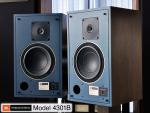EveAnna,
Do tell. I used them years ago. I hope they have improved since.
It depends a lot on the application and the overall voicing of the particular loudspeaker drivers and the system as a whole. By this I mean your amps and source are also part of the equation. Not something that you will see on voltage drivers or typical loudspeaker response curves.
There is no one right solution only that some work better than others in certain instances.
The trick is to find something that builds on the complementry aspects of a particular loudspeaker system without everthing else going to hell. Unfortunately the baby tends to get thrown out with the bath water with some engineers.
Wedding it out and making sense of it all is the fun part.
Basically what we have done is assess over an extended period of time the JBL stock crossover capacitors of a vintage JBL network and then applied in situ other crossover capacitor parts under controlled conditions.
By an extended period of time I am not talking about building up a vintage monitor and playing a few tunes over a week or so. We are talking months of evaluations and long term experience with a known monitor(s) used in the assessment process.
These controlled conditions are of course relative to the test environment and the user would need to take into account other considerations such as their room acoustics and equipment preferences.
None the less there are clearly identified tends or should I say traits.
Some people would say in the end its a personal preference thing.
However I draw a line where obvious component (part) colorations are evident when one is aware of what a known recording of a particular instrument / human voice actually sounds like.
Sadly many consumer users do not know what is natural or real sounding and they are at the mercy of marketing department or bean counter preferences in a final product offering as they do not have the means or resources to hear and see the differences.
In the end the user then becomes educated around long term exposure to a particular component parts and ultimately system coloration which they take as being correct.
This is complicated by the fact that in many instances inherant component colorations actually compensate for each other in an additive and subtractive manner. Some of these component colorations are enjoyable to the ear while others are irritating.
Perhaps this is why there are so many offering of audio nirvana for those special and often expensive parts.
Over the next few weeks I will talk about some of the explorations of crossover capacitors we have done and other related but important issues.



 Reply With Quote
Reply With Quote





